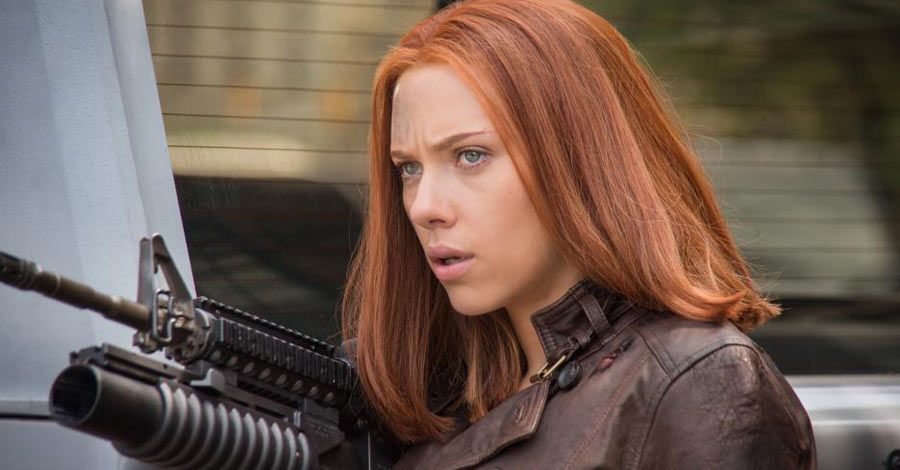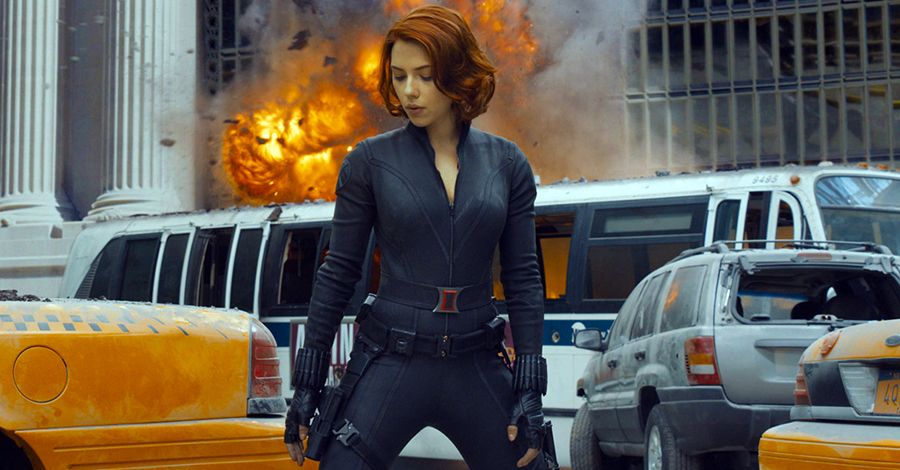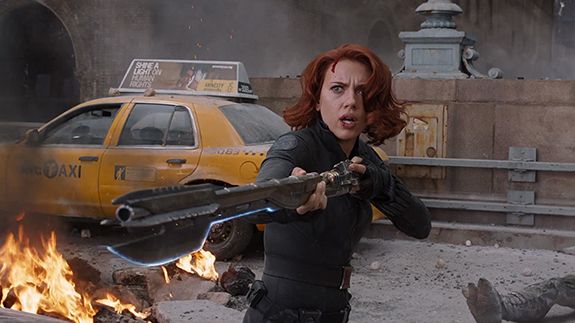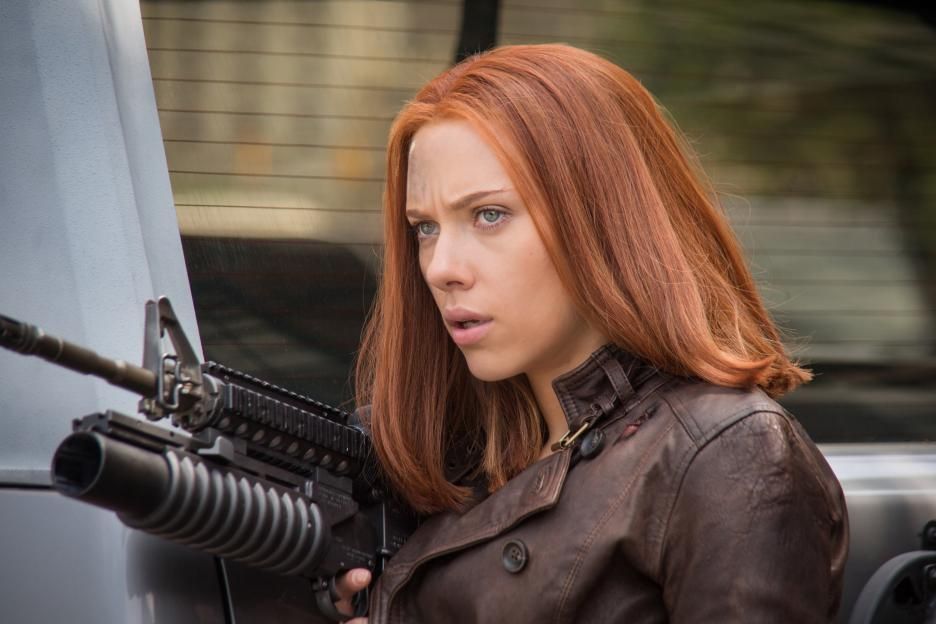With only four episodes under its belt, "Marvel's Agent Carter" continues to make waves in the superhero film swimming pool. As the first female-led live-action property of the Marvel Studios era, Carter has drawn a lot of attention to the media giant's portrayal of women on screen. In light of recent revelations in "The Blitzkrieg Button", it looks as if "Agent Carter" might even go so far as to explore the roots of one of the Marvel Cinematic Universe's most formidable female fighters.
Carter has joined the ranks of Black Widow and Gamora as Marvel's latest woman hero -- but how does she, and her fighting style in particular, chalk up against her predecessors and what does that mean for the Marvel Cinematic Universe at large? CBR has embarked on a three-part examination of the fighting styles of the MCU's female protagonists, and how it reflects their characters.
Black Widow
First, let's take a look at Black Widow, played in multiple Marvel films by Scarlett Johansson. Co-starring in three movies over five years, Black Widow is the MCU's longest standing female hero, though she's set to be surpassed by Peggy Carter in amount of screentime by the time the "Agent Carter" miniseries wraps. However, Black Widow and her preferred method of operation offer the best glimpse into a female character that the MCU has provided yet.
As a spy and former assassin, Black Widow is a chameleon. Her particular skill set involves a careful -- and often quick -- assessment of her surroundings before using that to her advantage with swift and precise improvisation. In her "Iron Man 2" Hammer Tech fight, for instance, she uses multiple assets available to her in that environment -- from some multipurpose gadgets on her person to a cart left in the hallway to a security guard's doubled over body -- before stringing up one goonie from the ceiling.
Her "Avengers" scenes are slightly more complex, though her introduction here is rather straightforward: a flipped interrogation scene where she utilizes a chair and a chain, the very props meant to intimidate her. During her escape from Hulk on the Helicarrier, which segues into her encounter with Hawkeye, she makes use of her surroundings efficiently as she swings below and between catwalks in order to evade deadly blows. In her confrontation with Hawkeye, she turns his weapon against him by stripping him of it and beating him with it before utilizing a railing for his "cognitive recalibration." Her battle with the Chitauri, however, is even more telling. Within minutes, she is able to fully assess and operate their alien technology, which proves to be a more effective weapon than her pistols. Applying this knowledge, she devises a way to reach the tesseract with their chariots and disable the portal with Erik Selvig's help, stemming the tide of Chitauri warriors.
This continues through "Captain America 2: The Winter Soldier." She gets a swift tour of Batroc's ship by using a stairwell to quickly and quietly take care of his lackeys. As she wraps her end of the security detail, she casually takes a wrench from a shelf to knock out her last adversary. In her first on-screen encounter with the Winter Solider, she uses the chaotic surroundings to trick him into believing that she is somewhere she is not so that she can attack him from behind. While this doesn't necessarily work out for her, the maneuver is clever and deftly carried out, distracting him just long enough that she's able to get the jump on him -- literally. Her final fight against Pierce finds her as a literal chameleon, using spy tech to become someone else entirely. With the element of surprise, she's able to prevent a casualty while accomplishing her goal: dumping all of S.H.I.E.L.D's -- and thereby Hydra's -- secret files online.
In all of these cases, Black Widow's primary weapon is her body. That isn't to say, of course, that her intuition counts for nothing; however, without her combat skills, her intricate, on-the-spot planning would be moot. She uses stealth to approach her targets, coming at them from all angles. From her head to her thighs, she can manipulate any extremity into a weapon and she isn't above fighting dirty, as we saw when she bit Hawkeye in "Avengers." She also favors a few pieces of weaponized gadgetry, like her Widow's Bite gauntlets, taser disks and -- very occasionally -- guns; however, she uses these items only in a few instances in addition to her full-bodied attacks.
Though we've often heard of the red in her ledger, her deadly ways have obviously changed by the time we see her in "Iron Man 2"; her takedowns, though rough, aren't fatal -- at least against innocents. Moments after her introduction, she swiftly takes Tony's driver Happy down in a quick but relatively painless show of self defense, part reflex and part restraint. Likewise, her first real altercation at Hammertech reveals no clear casualties, for she was up against what appeared to be guards for hire. She's able to disarm Hawkeye and bring him back to his normal state without causing any lasting damage. She takes down her fair share of Chitauri warriors because they explicitly attempt to kill her. Likewise, in "Cap 2," the soldiers on Batroc's ship have no qualms about fighting back. Black Widow distributes only the necessary force to dismantle her opponents.
What's more, in the few instances that Black Widow works around civilians, it's made abundantly clear that she cares for their well-being and will divert attention to them at the expense of the mission at hand. These scenes are more subtle but speak for themselves: in "Avengers," for instance, she takes precious time out to help passengers out of a crashed bus alongside Hawkeye. "Cap 2" has a far more telling sequence: in her encounter with the Winter Soldier on the overpass, she runs for cover to avoid his hailstorm of bullets, but she does so in a direct way. She goes in a straight line in an open space, leaving herself open to be targeted. Likewise, as she runs, she yells at the civilians to get out of the way, calling attention to herself so that she maintains the Winter Soldier's focus before he catches up to her. Though her demeanor is generally dry and removed, her choices in key scenes like this reveal her true heroism.
To date, Black Widow remains the flagship female character of the MCU. Though long denied her own film and broader merchandising, she plays a critical part in uniting the Avengers and getting her team members out of some seriously sticky situations. Her training, her application of it and her conscious decision to forgo it in order to save the people around her mark Natasha Romanoff as a true hero. As such, she becomes the model by which our other contenders -- Gamora and Peggy Carter -- are compared, at least for the purposes of this analysis. The way that Gamora and Peggy Carter size up, however, speaks volumes of the MCU's portrayal of women in its first eight years.
Next up: Gamora, Guardian of our Galaxy.
Check back with CBR for the second part of the "Super Smash Sisters" series!




